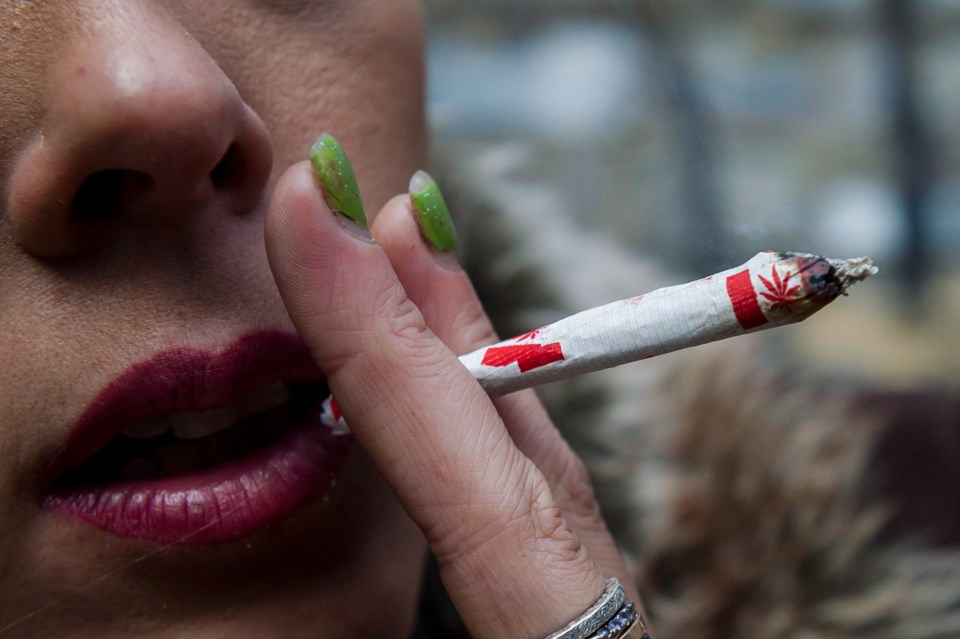The B.C. government hopes weak cannabis sales will rebound as the province reaches a “critical mass” of public and private stores in the coming months, says the minister responsible.
Solicitor General Mike Farnworth said he’s not worried that the most recent second-quarter financial update shows cannabis revenue $18 million below the projected $38 million from the provincial share of federal excise revenue.
“I expect to see a significant increase in revenue,” Farnworth said. “We’ve sold more cannabis at legal stores in this province in the first week of October than was sold in the entire month of June.”
B.C. received $475,929 in cannabis revenue in June. The province will, at some point this month, begin sales of legal cannabis edibles, extracts and topicals, which could also drive up sales. Cannabis first went on sale in B.C. in October 2018, after the federal government made dried products and seeds legal.
Despite Farnworth’s optimism, the province continues to face criticism that its cannabis policies have stifled growth in the industry through a cumbersome security clearance process, waiting times for licences that can stretch as long as a year, high prices compared to the black market, and an aggressive government retail arm that has used the delays to snatch up prime locations for public stores in key communities.
“It’s phenomenal a province that is known for pot is struggling so badly,” said Opposition Liberal critic Peter Milobar. “It seems like government is getting in the way instead of getting the checks done quickly, efficiently and then moving on.”
B.C. has issued 170 licences for private cannabis stores, roughly 31 per cent of applications. A further 47 per cent are complete, but “being processed” through the government’s security review. The government also operates 10 public stores.
“As more legal stores come on, you are going to see those legal sales increase,” said Farnworth. “In August, we led the country in percentage increase. We had a 112 per cent increase in sales, which was the most of any province. As more legal stores come online more people purchase from legal stores. And we’re seeing now as we’re getting close to the 200 licences now you’re getting to more of critical mass.”
Enthusiasm in the cannabis industry has been dampened by unhelpful rules from Ottawa on maximum land sizes and facility inspections that have hurt small-scale growers, said Jeremy Jacob, president of the Association of Canadian Cannabis Retailers and co-founder of Vancouver-based Village Bloomery.
“We have the lowest buy-in in Canada in B.C. to regulation,” he said. “What’s really gone wrong? One of the things is supply.”
“I like to say consumers in B.C. are the most sophisticated in Canada … when consumers now go in and sample the regulated products at the regulated prices, and then they have ready options available for the unregulated market, it becomes difficult to support.”
Jacob also pointed to a high combination of federal and provincial taxes, including cannabis oils for vaping that are caught up in B.C.’s new 20 per cent provincial sales tax surcharge on vaping products.
The B.C. government has at times blamed a municipal election for holding up licence approvals. But some store owners pointed the finger at the province for security reviews designed to flag links to organized crime that instead left business owners in limbo for months as they paid for leases, staff and inventory.
Premier John Horgan called it a “glitch in the system” and joked only the government could fail to make money selling weed in B.C. Farnworth said he’s not allowed to talk about security specifics.
“We know it was taking a long time, we absolutely knew that,” he said. “We also had a good idea why. And it’s like, OK can we fix it? And in my view, yes we have.”
The government is now focused on making changes to support a craft cannabis industry, similar to the craft beer and wine sectors, said Farnworth.
Not all the attention on cannabis legalization in B.C. has focused entirely on the mainstream retail stores.
Researcher M-J Milloy, the inaugural Canopy Growth Professor in Cannabis Science at the University of B.C., said researchers on Vancouver’s Downtown Eastside are also studying whether drug users there can access legal cannabis to reduce their risk of overdosing on hard drugs.
“Our data indicates that it really hasn’t come to the Downtown Eastside,” he said.
“We have about 3,000 people we interview every six months and the last number of years we’ve asked where they get their cannabis. Less than one per cent tell us they access the legal medical market and no one has told us they use the legal non-medical market.
“It’s not very surprising for us given the fact there are no retail stores available to people in the Downtown Eastside and, more importantly, the weed is too expensive.”
Illegal cannabis sells for between $6 and $10 a gram in the Downtown Eastside, but as high as $18 per gram in government and private stores, said Milloy. “Legal cannabis simply is not accessible for a majority of people who might use it.”
The fact government and private stores can’t be reached by this lower socio-economic class is also concerning when you consider government’s increased enforcement efforts to raid and close illegal dispensaries, which are often serving the marginalized market, he said.
“We’ve shared with government our preliminary evidence that cannabis might be beneficial for people at risk of overdose, and we’ve shared evidence documenting how some people are initially using cannabis to reduce their use of other substances,” he said. “And to be frank, the government persevering in these enforcement actions in the face of that evidence would be a wrong decision.”



